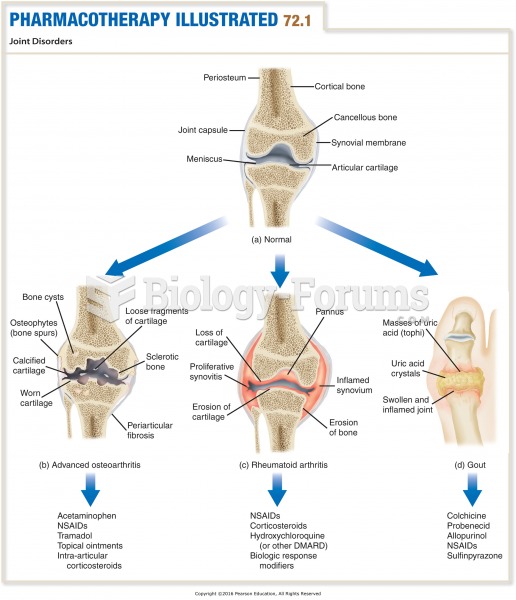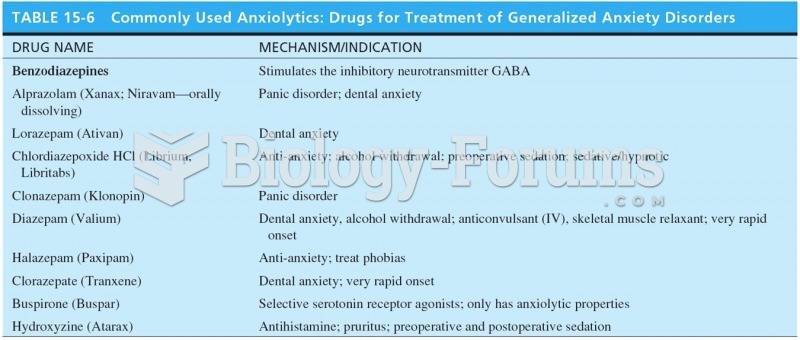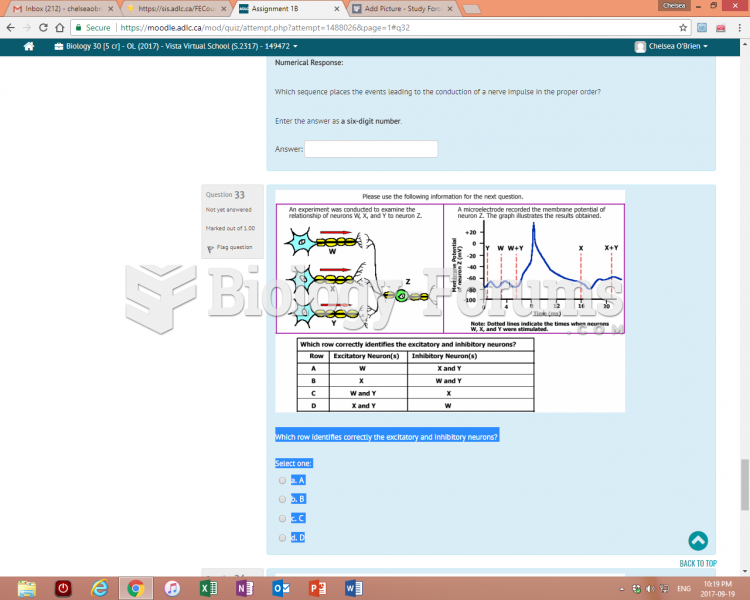|
|
|
Bacteria have flourished on the earth for over three billion years. They were the first life forms on the planet.
Adolescents often feel clumsy during puberty because during this time of development, their hands and feet grow faster than their arms and legs do. The body is therefore out of proportion. One out of five adolescents actually experiences growing pains during this period.
Drying your hands with a paper towel will reduce the bacterial count on your hands by 45–60%.
Nearly all drugs pass into human breast milk. How often a drug is taken influences the amount of drug that will pass into the milk. Medications taken 30 to 60 minutes before breastfeeding are likely to be at peak blood levels when the baby is nursing.
The average adult has about 21 square feet of skin.







